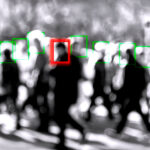How to Identify Enemies in Your Midst
In the clandestine world of intelligence, a fundamental tradecraft skill is the ability to discern friend from foe.
This concept extends beyond the confines of a spy’s covert universe and to the realm of everyday normal life.
In our everyday lives, recognizing the veiled adversarial intentions in those around us can be crucial to personal success, peace, and well-being. This intel focuses on discerning these hidden enemies, be they at work, within your social circle, or even family.
Recognizing the Hidden Enemy
Identifying covert enemies starts with understanding that not all adversarial intentions are overt. Indeed, some of the most damaging negative influences can come from those who portray themselves as friends, colleagues, or family.
Excessive Flattery: Consistent, unwarranted praise can often be a mask for ulterior motives. Realize that genuine compliments are often specific and rare, while flattery tends to be vague and excessive.
Inconsistent Behavior: A person whose behavior varies widely may be presenting a false front. If someone’s actions don’t align with their words, this inconsistency can be a sign of hidden adversarial intent.
Over-Interested Parties: Be cautious of those showing undue interest in your personal affairs or professional endeavors. This could be a sign they’re gathering information for their own benefit or against your interests.
Negative Vibes: Trust your instincts. If you feel consistently uncomfortable or on edge around a particular individual, this could be your subconscious picking up on subtle signs of adversarial intent.
Tactical Discernment
Once you’ve identified potential hidden enemies, the next step is to employ strategic methods to confirm your suspicions.
Probing: Casually ask probing questions that might encourage them to reveal their true intentions. Listen carefully to their responses and pay close attention to any signs of defensiveness or evasion.
Observation: Watch their interactions with others. If their behavior towards you is significantly different from their behavior towards others, it may be a sign of underlying enmity.
Test Loyalty: You can construct scenarios to test their loyalty. For example, entrust them with a piece of ‘sensitive’ but not critical information and see if it gets leaked.
Strategic Silence: The Art of Concealment
After confirming who your hidden enemies are, you may choose not to confront them. Instead, utilize your knowledge as a strategic advantage. Understanding your adversary’s mindset and motives can provide you with a unique insight that helps you anticipate their actions and prepare accordingly.
In fact, allowing them to think that you are oblivious to their real intent keeps you in a position of power. This tactic—called “strategic silence”—can be effective in a variety of situations, whether in corporate politics, social circles, or familial disputes. It gives you the upper hand to control the narrative and possibly even manipulate the outcome to your favor.
However, it’s crucial not to allow this knowledge to consume or distract you. Your energy should be primarily focused on constructive endeavors—enhancing your skills, building strong relationships with genuine allies, and achieving your goals.
Ultimately, identifying the hidden enemy is about self-preservation and ensuring you are surrounded by those who genuinely have your best interests at heart. Remember, everyone deserves a place where they feel safe, respected, and valued. Anyone who threatens this harmony, covertly or overtly, is indeed an enemy, and understanding this is the first step towards taking control of your environment.
[INTEL : How to Turn Your Enemies Into Allies]







